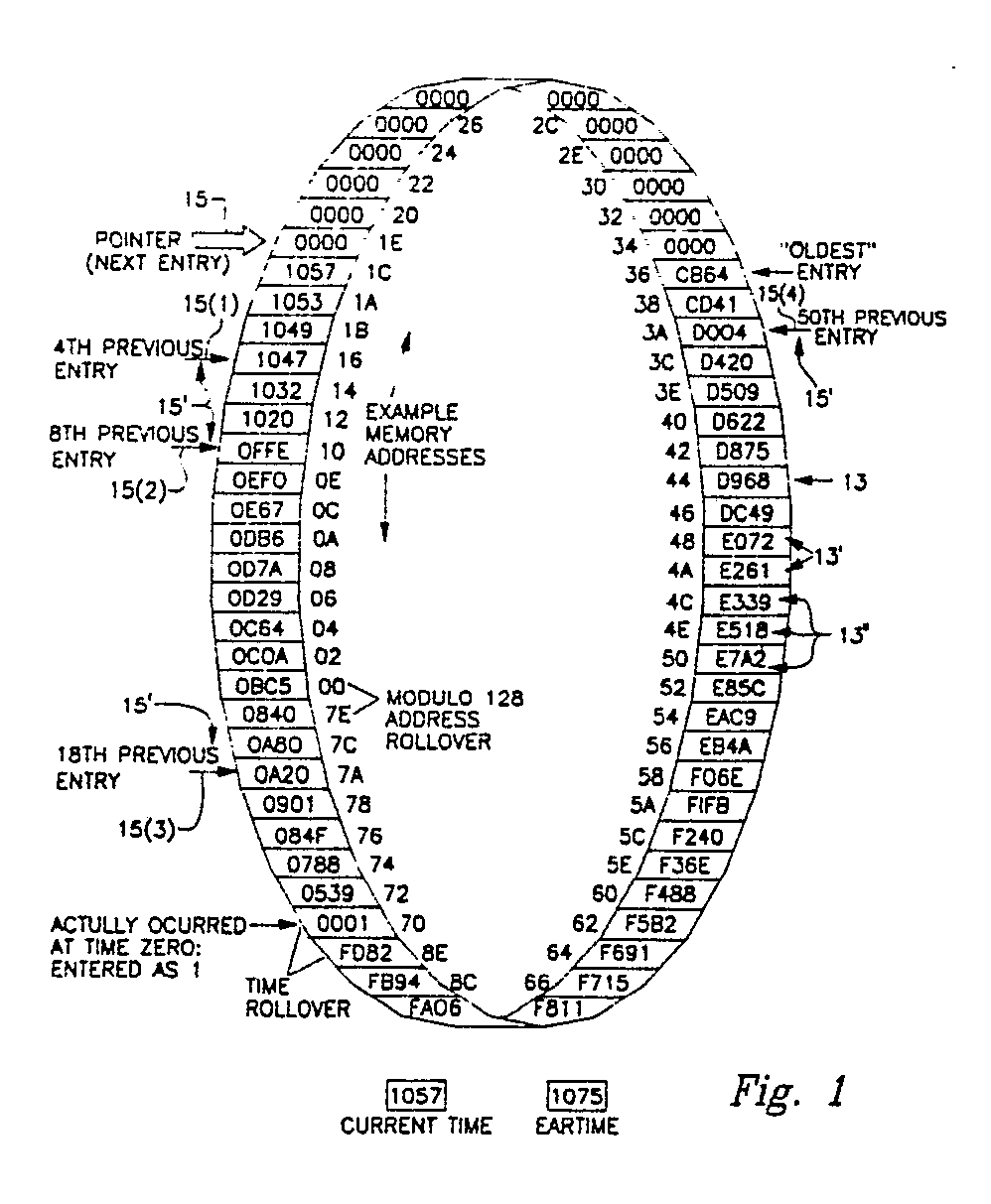(57) Transponder reply rate limiting employing a circular memory queue (13) to store the
times of prior responses up to the limits of circular memory queue capacity. Separate
circular memory queues contain the times of (1) long replies, and both (2) long or
short replies. Each circular memory queue has a pointer (15) and several offset indicators
(15′) which are spaced from the pointer to the time entry positions at predetermined
intervals according to corresponding preestablished criteria. After each transponder
reply, the time of the reply is entered in the circular memory queue at a next pointer
location. Eartimes, i.e., earliest allowable response times, are repeatedly determined
and compared to time elapsed from a selected reference time. When the current time
exceeds the eartime, for a given inquiry signal, a response signal is generated by
the transponder electronics and is transmitted to the inquiring ground station. Eartimes
are based upon predetermined criteria of allowable response rates in selected time
periods. The offset indicators (15′) spaced from the queue pointer (15) are employed
to extract times from particular locations in the circular memory queue (13). Each
extracted time is adjusted to a predetermined extent to establish a candidate eartime
from which a final eartime is selected.
|

|
